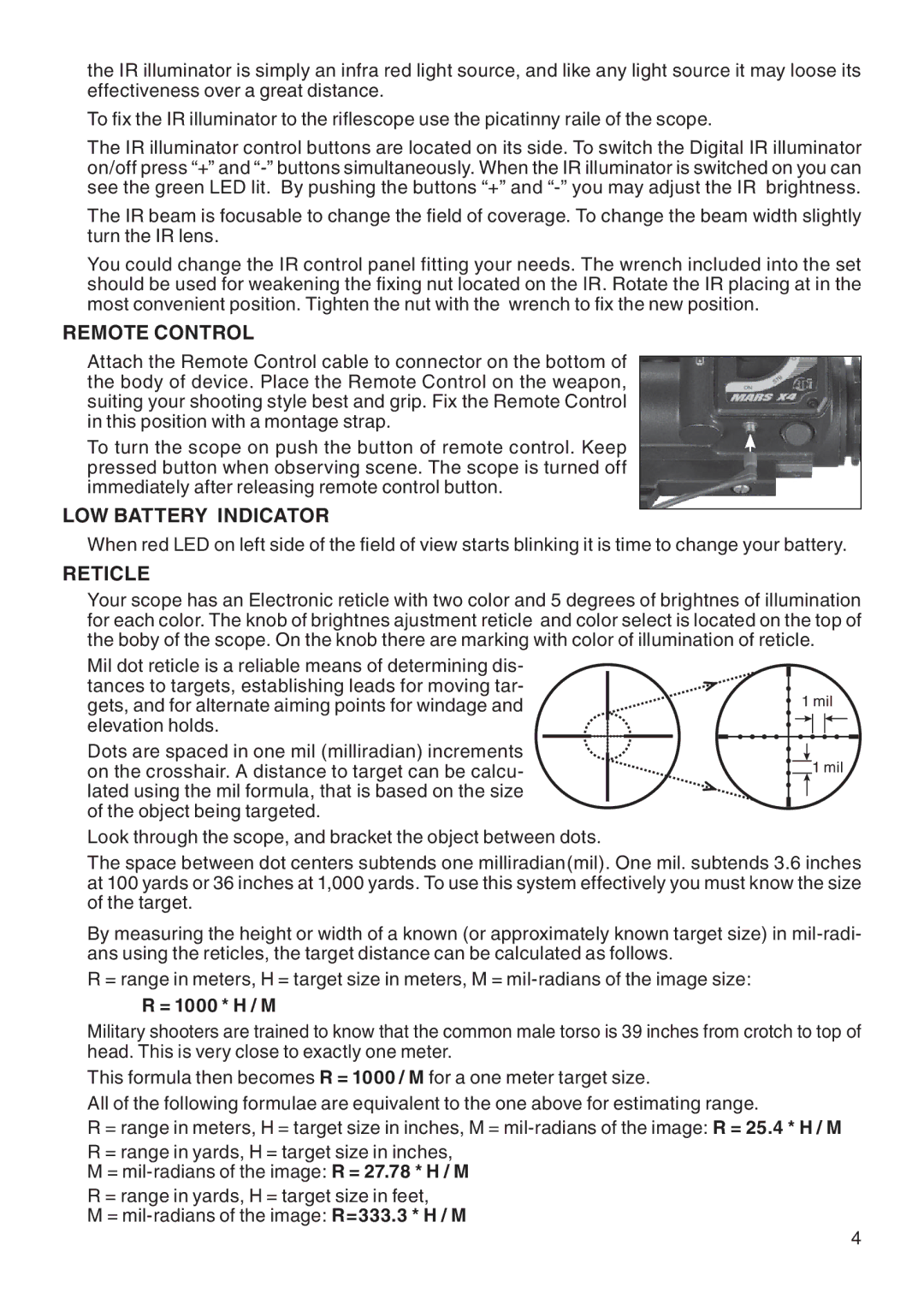
the IR illuminator is simply an infra red light source, and like any light source it may loose its effectiveness over a great distance.
To fix the IR illuminator to the riflescope use the picatinny raile of the scope.
The IR illuminator control buttons are located on its side. To switch the Digital IR illuminator on/off press “+” and
The IR beam is focusable to change the field of coverage. To change the beam width slightly turn the IR lens.
You could change the IR control panel fitting your needs. The wrench included into the set should be used for weakening the fixing nut located on the IR. Rotate the IR placing at in the most convenient position. Tighten the nut with the wrench to fix the new position.
REmote control
Attach the Remote Control cable to connector on the bottom of the body of device. Place the Remote Control on the weapon, suiting your shooting style best and grip. Fix the Remote Control in this position with a montage strap.
To turn the scope on push the button of remote control. Keep pressed button when observing scene. The scope is turned off immediately after releasing remote control button.
low Battery indicator
When red LED on left side of the field of view starts blinking it is time to change your battery.
RETICLE
Your scope has an Electronic reticle with two color and 5 degrees of brightnes of illumination for each color. The knob of brightnes ajustment reticle and color select is located on the top of the boby of the scope. On the knob there are marking with color of illumination of reticle.
Mil dot reticle is a reliable means of determining dis- tances to targets, establishing leads for moving tar- gets, and for alternate aiming points for windage and elevation holds.
Dots are spaced in one mil (milliradian) increments on the crosshair. A distance to target can be calcu-
lated using the mil formula, that is based on the size of the object being targeted.
Look through the scope, and bracket the object between dots.
1 mil
![]()
![]() 1 mil
1 mil
The space between dot centers subtends one milliradian(mil). One mil. subtends 3.6 inches at 100 yards or 36 inches at 1,000 yards. To use this system effectively you must know the size of the target.
By measuring the height or width of a known (or approximately known target size) in
R = range in meters, H = target size in meters, M =
R = 1000 * H / M
Military shooters are trained to know that the common male torso is 39 inches from crotch to top of head. This is very close to exactly one meter.
This formula then becomes R = 1000 / M for a one meter target size.
All of the following formulae are equivalent to the one above for estimating range.
R = range in meters, H = target size in inches, M =
R = range in yards, H = target size in inches, M =
R = range in yards, H = target size in feet,
M =
